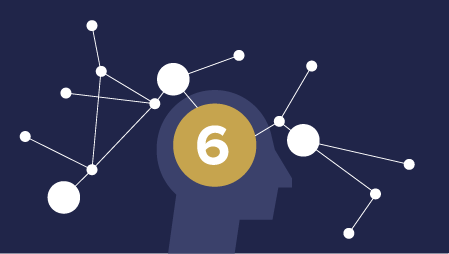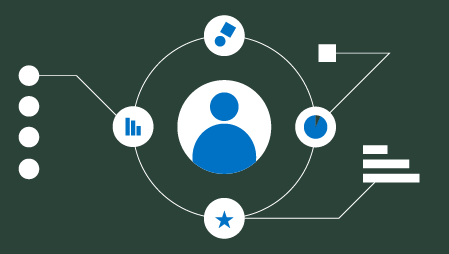Ready to learn Data Science? Browse Data Science Training and Certification courses developed by industry thought leaders and Experfy in Harvard Innovation Lab.
Logistic Regression is one of the most used Machine Learning algorithms for binary classification. It is a simple Algorithm that you can use as a performance baseline, it is easy to implement and it will do well enough in many tasks. Therefore every Machine Learning engineer should be familiar with its concepts. The building block concepts of Logistic Regression can also be helpful in deep learning while building neural networks. In this post, you will learn what Logistic Regression is, how it works, what are advantages and disadvantages and much more.
Table of contents:
- What is Logistic Regression?
- How it works
- Logistic VS. Linear Regression
- Advantages / Disadvantages
- When to use it
- Multiclass Classification
- one-versus-all (OvA)
- one-versus-one (OvO)
- Other Classification Algorithms
- Summary
What is Logistic Regression?
Like many other machine learning techniques, it is borrowed from the field of statistics and despite its name, it is not an algorithm for regression problems, where you want to predict a continuous outcome. Instead, Logistic Regression is the go-to method for binary classification. It gives you a discrete binary outcome between 0 and 1. To say it in simpler words, it’s outcome is either one thing or another.
A simple example of a Logistic Regression problem would be an algorithm used for cancer detection that takes screening picture as an input and should tell if a patient has cancer (1) or not (0).
How it works
Logistic Regression measures the relationship between the dependent variable (our label, what we want to predict) and the one or more independent variables (our features), by estimating probabilities using it’s underlying logistic function.
These probabilities must then be transformed into binary values in order to actually make a prediction. This is the task of the logistic function, also called the sigmoid function. The Sigmoid-Function is an S-shaped curve that can take any real-valued number and map it into a value between the range of 0 and 1, but never exactly at those limits. This values between 0 and 1 will then be transformed into either 0 or 1 using a threshold classifier.
The picture below illustrates the steps that logistic regression goes through to give you your desired output.

Below you can see how the logistic function (sigmoid function) looks like:

We want to maximize the likelihood that a random data point gets classified correctly, which is called Maximum Likelihood Estimation. Maximum Likelihood Estimation is a general approach to estimating parameters in statistical models. You can maximize the likelihood using different methods like an optimization algorithm. Newton’s Method is such an algorithm and can be used to find maximum (or minimum) of many different functions, including the likelihood function. Instead of Newton’s Method, you could also use Gradient Descent.
Logistic VS. Linear Regression
You may be asking yourself what the difference between logistic and linear regression is. Logistic regression gives you a discrete outcome but linear regression gives a continuous outcome. A good example of a continuous outcome would be a model that predicts the value of a house. That value will always be different based on parameters like it’s size or location. A discrete outcome will always be one thing (you have cancer) or another (you have no cancer).
Advantages / Disadvantages
It is a widely used technique because it is very efficient, does not require too many computational resources, it’s highly interpretable, it doesn’t require input features to be scaled, it doesn’t require any tuning, it’s easy to regularize, and it outputs well-calibrated predicted probabilities.
Like linear regression, logistic regression does work better when you remove attributes that are unrelated to the output variable as well as attributes that are very similar (correlated) to each other. Therefore Feature Engineering plays an important role in regards to the performance of Logistic and also Linear Regression. Another advantage of Logistic Regression is that it is incredibly easy to implement and very efficient to train. I typically start with a Logistic Regression model as a benchmark and try using more complex algorithms from there on.
Because of its simplicity and the fact that it can be implemented relatively easy and quick, Logistic Regression is also a good baseline that you can use to measure the performance of other more complex Algorithms.
A disadvantage of it is that we can’t solve non-linear problems with logistic regression since it’s decision surface is linear. Just take a look at the example below that has 2 binary features from 2 examples.

It is clearly visible that we can’t draw a line that separates these 2 classes without a huge error. To use a simple decision tree would be a much better choice.

Logistic Regression is also not one of the most powerful algorithms out there and can be easily outperformed by more complex ones. Another disadvantage is its high reliance on a proper presentation of your data. This means that logistic regression is not a useful tool unless you have already identified all the important independent variables. Since its outcome is discrete, Logistic Regression can only predict a categorical outcome. It is also an Algorithm that is known for its vulnerability to overfitting.
When to use it
Like I already mentioned, Logistic Regression separates your input into two „regions” by a linear boundary, one for each class. Therefore it is required that your data is linearly separable, like the data points in the image below:

In other words: You should think about using logistic regression when your Y variable takes on only two values (e.g when you are facing a classification problem). Note that you could also use Logistic Regression for multiclass classification, which will be discussed in the next section.
Multiclass Classification
Out there are algorithms that can deal by themselves with predicting multiple classes, like Random Forest classifiers or the Naive Bayes Classifier. There are also algorithms that can’t do that, like Logistic Regression, but with some tricks, you can predict multiple classes with it too.
Let’s discuss the most common of these “tricks” at the example of the MNIST Dataset, which contains handwritten images of digits, ranging from 0 to 9. This is a classification task where our Algorithm should tell us which number is on an image.
1) one-versus-all (OvA)
With this strategy, you train 10 binary classifiers, one for each number. This simply means training one classifier to detect 0s, one to detect 1s, one to detect 2s and so on. When you then want to classify an image, you just look at which classifier has the best decision score
2) one-versus-one (OvO)
Here you train a binary classifier for every pair of digits. This means training a classifier that can distinguish between 0s and 1s, one that can distinguish between 0s and 2s, one that can distinguish between 1s and 2s etc. If there are N classes, you would need to train NxN(N-1)/2 classifiers, which are 45 in the case of the MNIST dataset.
When you then want to classify images, you need to run each of these 45 classifiers and choose the best performing one. This strategy has one big advantage over the others and this is, that you only need to train it on a part of the training set for the 2 classes it distinguishes between. Algorithms like Support Vector Machine Classifiers don’t scale well at large datasets, which is why in this case using a binary classification algorithm like Logistic Regression with the OvO strategy would do better, because it is faster to train a lot of classifiers on a small dataset than training just one at a large dataset.
At most algorithms, sklearn recognizes when you use a binary classifier for a multiclass classification task and automatically uses the OvA strategy. There is an exception: When you try to use a Support Vector Machine classifier, it automatically runs the OvO strategy.
Other Classification Algorithms
Other common classification algorithms are Naive Bayes, Decision Trees, Random Forests, Support Vector Machines, k-nearest neighbor and many others. We will also discuss them in future blog posts but don’t feel overwhelmed by the amount of Machine Learning algorithms that are out there. Note that it is better to know 4 or 5 algorithms really well and to concentrate your energy at feature-engineering, but this is also a topic for future posts.
Summary
In this post, you have learned what Logistic Regression is and how it works. You now have a solid understanding of its advantages and disadvantages and know when you can use it. Also, you have discovered ways to use Logistic Regression to do multiclass classification with sklearn and why it is a good baseline to compare other Machine Learning algorithms with.




